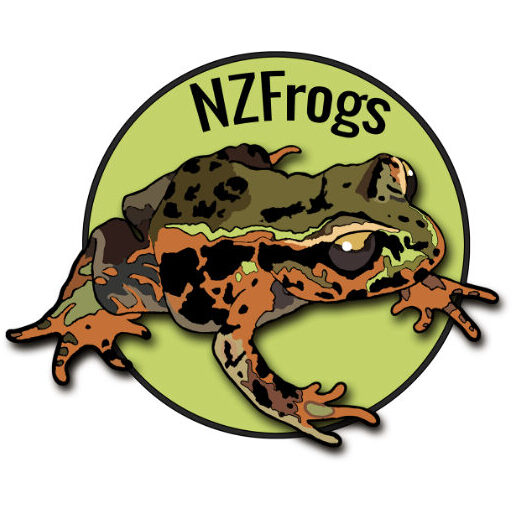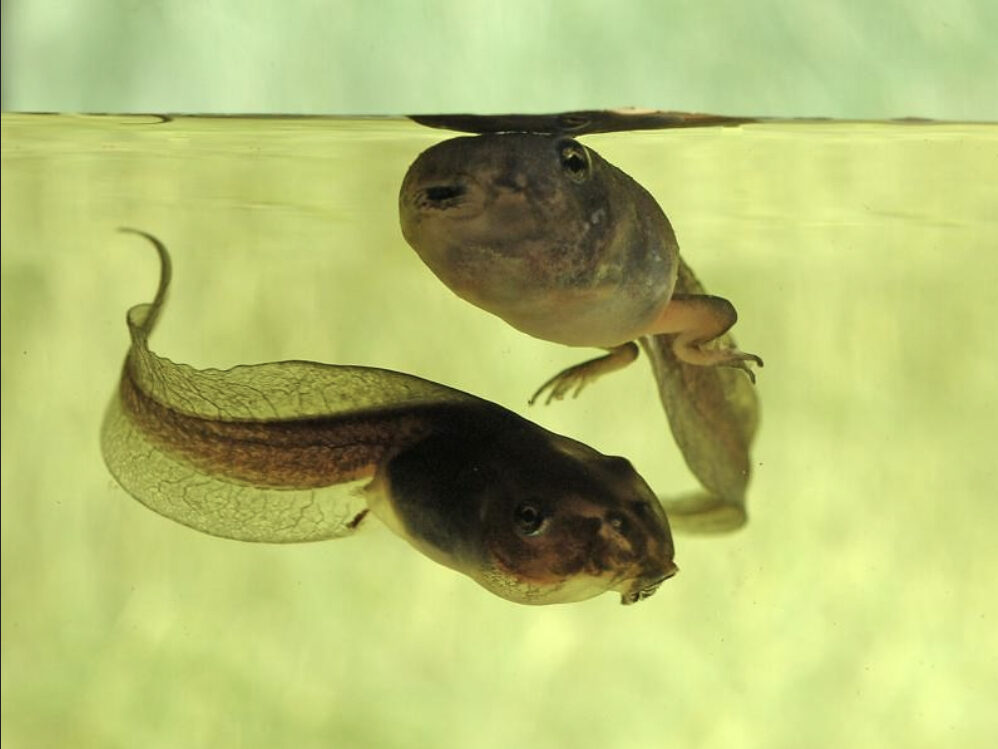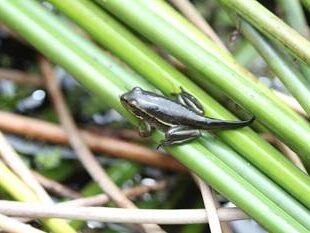The green and golden bell frog, Ranoidea aurea (previously Litoria aurea), is a magnificent looking frog and can often be mistaken for a garden ornament! In the late 1860s several shipments of these frogs were received from Sydney and purposefully released by the Auckland Acclimatisation Society.
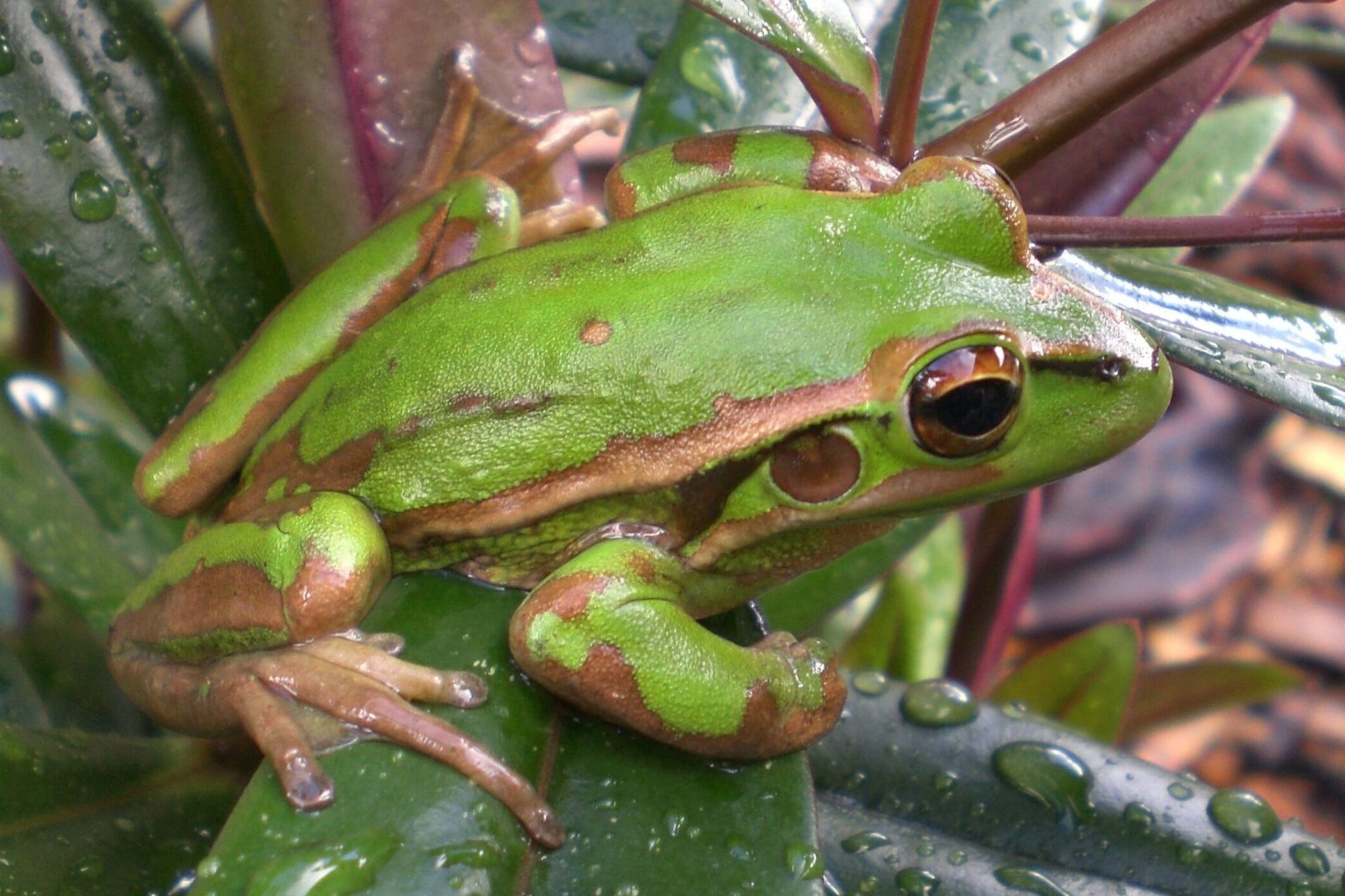
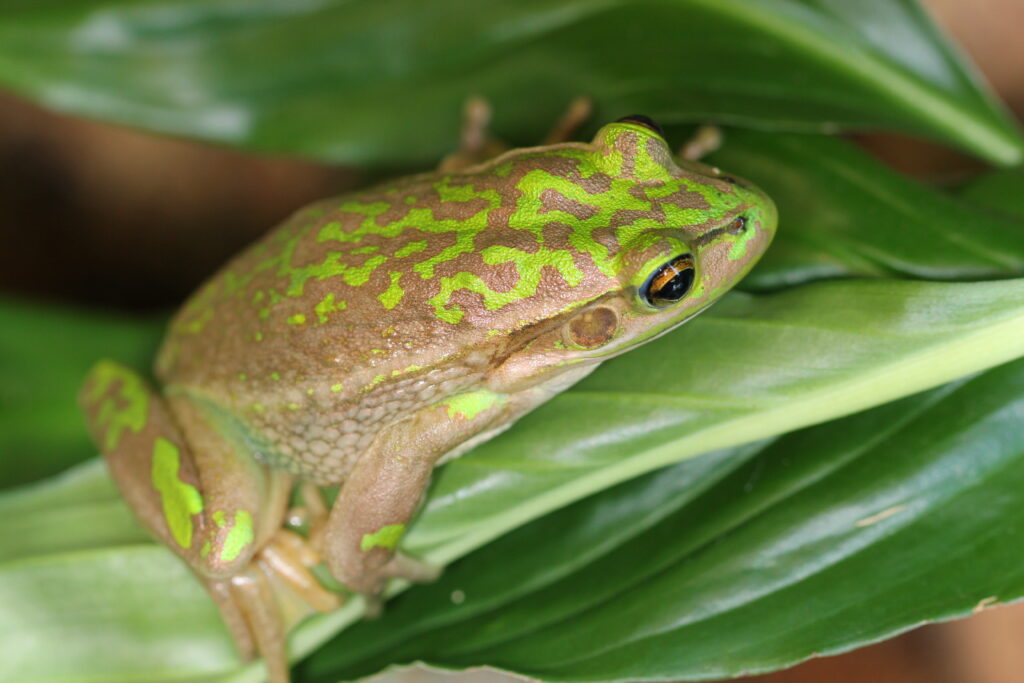
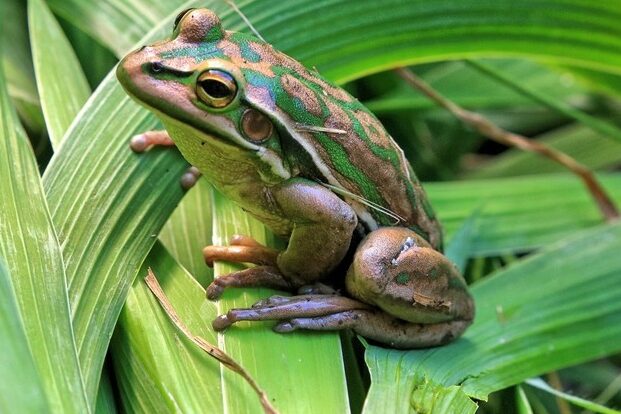
There have been several attempts to establish populations of this species in the South Island, but it appears that the climatic conditions are currently unfavourable. The species has naturalised in New Zealand and is primarily restricted to the upper half of the North Island (North of New Plymouth and Gisborne). However, there may be isolated populations in Southland. Green and golden bell frogs inhabit a variety of damp or aquatic habitats but are absent from the alpine zone.

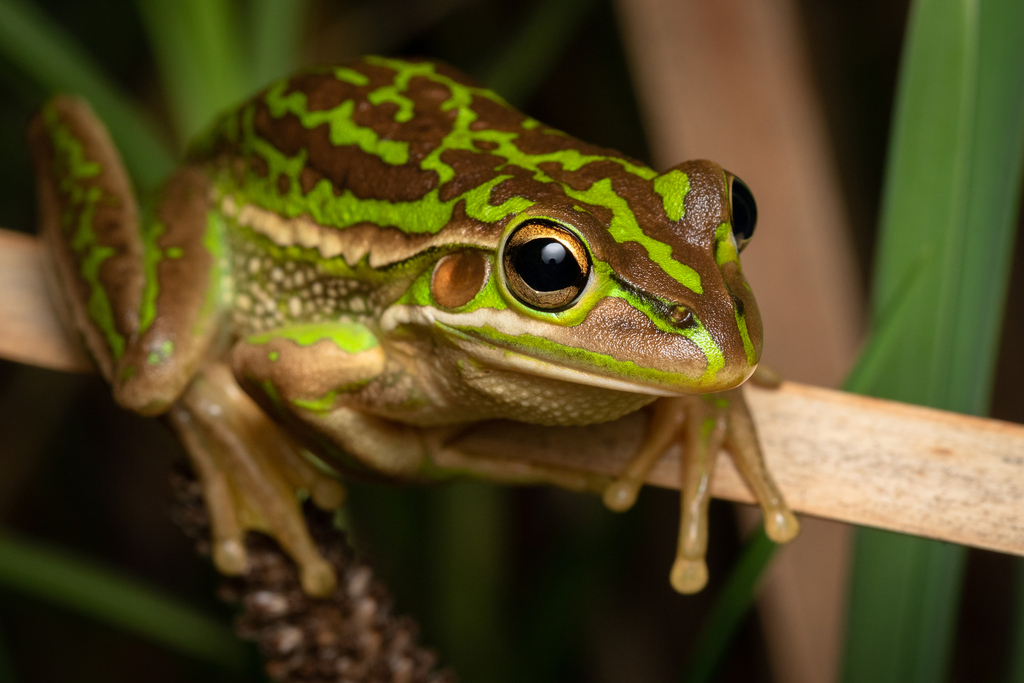
They occur sympatrically (together) with the southern bell frog. This species is not threatened in New Zealand but its population does fluctuate due to the impacts of Chytrid fungus. In their native distribution in Australia, they are classified as Vulnerable by the IUCN. Adult green and golden bell frogs consume a wide variety of food types, known as generalist feeders. Tadpoles begin feeding on algae and detritus but integrate small invertebrates into their diet or cannibalise other tadpoles as they grow larger.
Description
These frogs are brilliantly coloured with an overall green appearance interspersed with gold or bronze-coloured patches. They have a golden iris and their pupils are horizontal. There is a fold of skin (usually cream in colour) running from the eye along the side of the animal to its groin. This fold is bordered by a thin black line that continues over the head to the nostrils. There is a prominent, copper-coloured tympanum (eardrum). The back of their thighs and groin area are bright blue and the belly is smooth and white. The skin is very smooth and there is webbing only on their hind feet. They have suckers for climbing on all toes and fingers. During the breeding season males have darkened “nuptial” pads on their front toes to help with amplexus (mating).
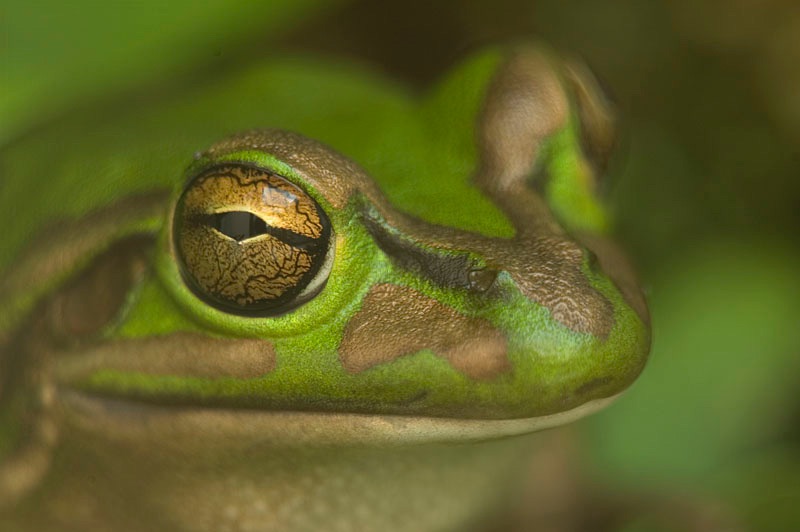
How big are these frogs?
Frog body size is generally measured as snout to vent length (SVL). SVL is the distance from their snout (tip of their nose) to their vent (bottom). Males are smaller than the females with an average SVL of about 50-60 mm, females can be larger with a SVL 70-85 mm. Some individuals may reach 10-15 mm larger than these average SVLs.
Call
Green and golden bell frogs have a deep nasal call. It has been described as a drawn out guttural four-part ‘craaaaaaaaawk, craaawk, crok, crok’ and large choruses can sound like motorbikes from a distance. Listen to their call here on the Australian FrogID page

Image by ©nhaass
Breeding
These frogs prefer to breed in temporary, shallow ponds in full sunlight and free of aquatic predators such as mosquito fish. Adult frogs are commonly found perched on aquatic vegetation or fallen trees near breeding sites. Green and golden bell frogs are quite unusual in the frog world because they like to bask in the sun and are active during the day. They breed during the summertime (October – March) with the males calling from the water’s surface. Females may lay between three and ten thousand eggs in a floating gelatinous mat, which sinks after 6-12 hours. The eggs hatch into black tadpoles after about two days, and metamorphosis occurs about two months later. Females take about 2 years to reach full size whereas males take only 9-12 months.
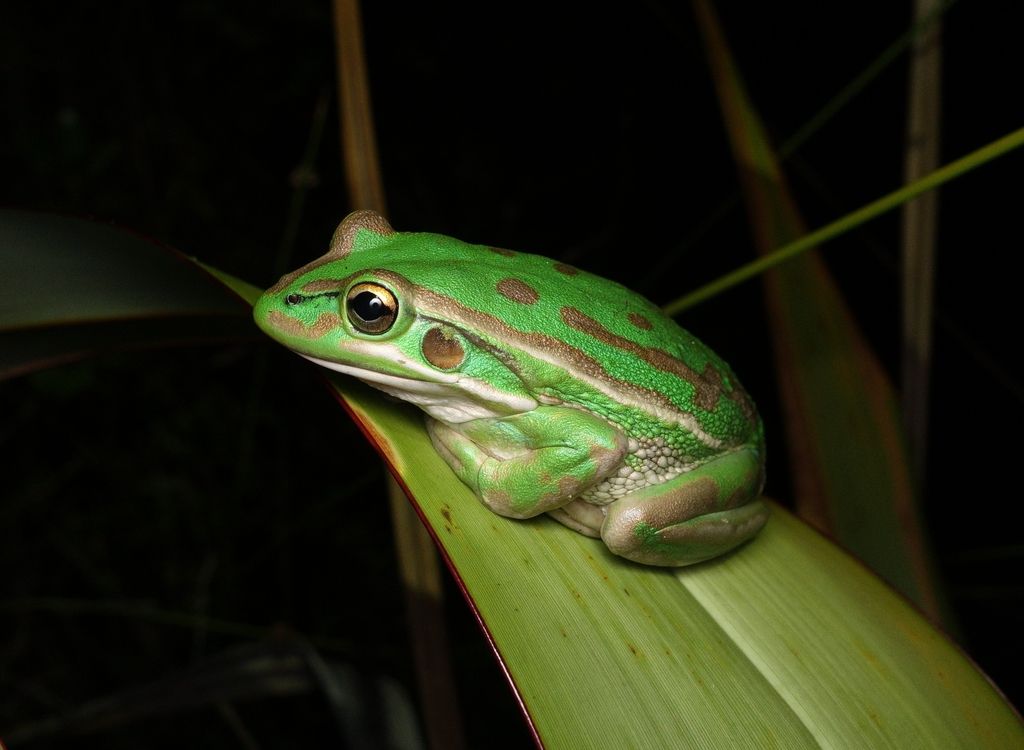
Image by ©Mathias Michael
References
Bishop, P. (2008). Bell frog populations in New Zealand-good news or bad news?. Australian zoologist, 34(3), 408-413.
Burns, Rhys J., et al.(2017) Conservation status of New Zealand amphibians. Wellington: Publishing Team, Department of Conservation, 2018.
Burns, R. J., et al,. (2018). Conservation status of New Zealand amphibians, 2017. Wellington: Publishing Team, Department of Conservation.
Jean-Marc Hero, Graeme Gillespie, Harold Cogger, Frank Lemckert, Peter Robertson. 2004. Litoria aurea. The IUCN Red List of Threatened Species 2004.
Purdie, S. (2022). A naturalist’s guide to the reptiles & amphibians of New Zealand (pp. 156). John Beaufoy Publishing.
Pyke, G., & White, A. (2001). A review of the biology of the green and golden bell frog Litoria aurea. Australian Zoologist, 31(4), 563-598.
